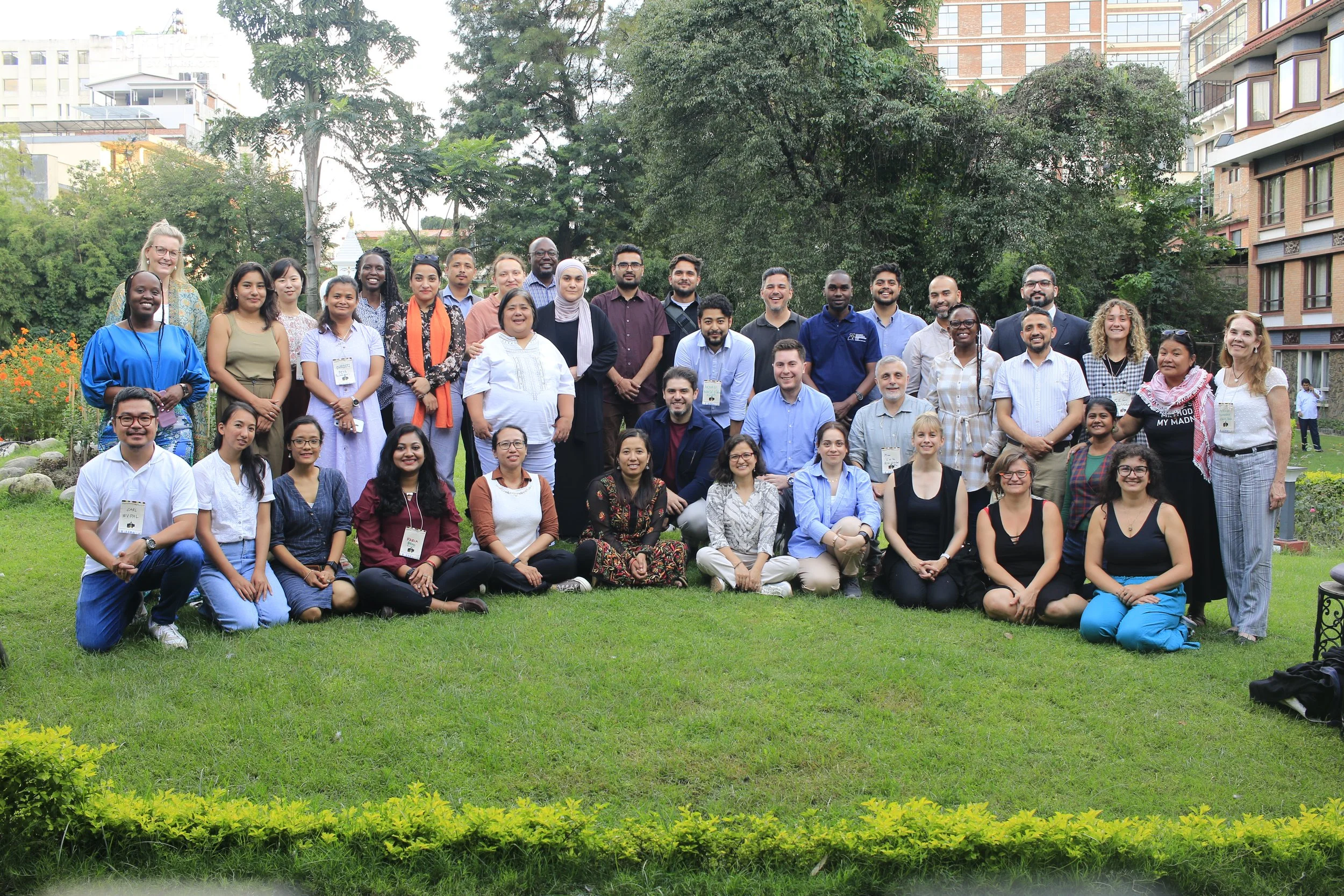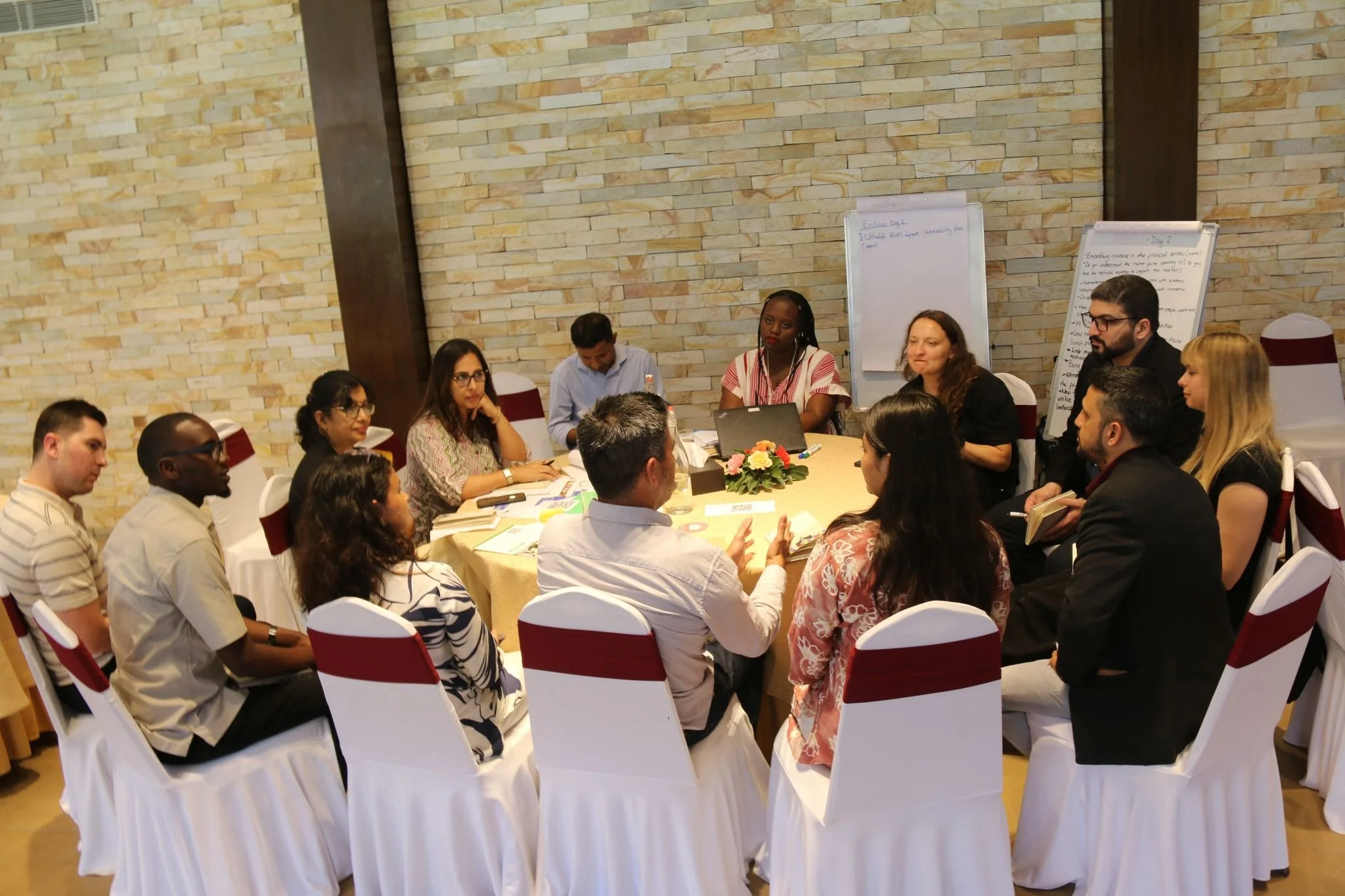
The humanitarian sector is at a crossroads. Dramatic cuts in foreign aid funding pose an existential threat to a system already struggling to keep up with ever-expanding emergencies, increasingly driven by the global climate crisis. Today, humanitarian practitioners face a stark choice between constriction and reinvention—one, already familiar, road leads toward doing less with less; the other, to a destination not yet fully known.
Response Innovation Lab has been taking the road less traveled for the past ten years and invites you to join us in Istanbul—a true city of crossroads—for RILx25, as we continue our learning journey to uncover more hidden powers of local innovation ecosystems and share the evidence from these explorations.. Together, we can chart a course toward a future where resilience is not just a response, but a strategy—where innovation is not the exception, but the norm.

RILx is the Response Innovation Lab network’s annual gathering and one of the few global events dedicated to exploring local humanitarian innovation and ecosystem-building through guided conversations with frontline practitioners and global thought leaders.
This year, RILx explores the dual themes around ecosystem and sustainability.
Theme 1: Humanitarian Systems Transformation
How will more decentralized and localized humanitarian systems and structures use innovation and learning to usher a new era of responses?
Theme 2: Climate Adaptation in Fragile Settings
How do we combine advanced technology, frugal solutions and innovative financing to create meaningful impact for vulnerable populations and ecosystems?

What You Can Look Forward to
RILx25 will curate an interactive gathering, focused on the intersection of innovation and ecosystem building, where response-based practitioners from various horizons can connect and share what works and what does not. The shared insights and calls to action from RILx25 will directly inform the global conversation on how foreign aid and local humanitarian systems must evolve to meet the challenges of today and tomorrow.
We are expecting around 200 by-invitation-only participants to co-create the RILx25 dialogue.
💡Connect with your fellow change-makers from humanitarian agencies, public institutions, corporates, impact investors philanthropic organizations and beyond
💡Engage with the voices of FRONTLINE humanitarian practitioners and investment-ready community innovators driving changes on the ground
💡Dive into Humanitarian Innovation 101 AND gain insights from sector thought leaders on emerging trends, sector priorities, and strategic directions
💡Participate in dynamic Fishbowl Dialogues designed for cross-sharing, deep reflections, and collective learning
💡Contribute to mapping the ecosystem opportunities and challenges that informs global conversations and shapes actionable pathways forward

-
How can we accelerate the localization agenda by harnessing the innovation of civil society organizations and local networks? Too often, the power of sub-national innovation ecosystems goes untapped. The key lies in meaningful engagement to unlock their full potential.
-
What does it take to deploy emerging technologies ethically and appropriately in diverse humanitarian contexts? How can innovation be meaningfully integrated with digitalization efforts? While community actors can draw valuable lessons from larger institutions and global players, there are also important cautionary tales that remind us of the risks, missteps, and unintended consequences.
-
As climate change deepens existing vulnerabilities, fragile settings demand context-specific, inclusive approaches to resilience. While “people, planet, and profit” offers an action blueprint for sustainability notably in the private sector, it often overlooks the realities of crisis-affected communities. This theme invites critical dialogue on how ALL stakeholders can co-create innovative, grounded solutions that address both climate risks and humanitarian needs.
-
What alternative funding models can be initiated by—or co-designed with—unconventional funders to support humanitarian innovation? And how can diverse stakeholders work together to make localization truly tangible at the ground level? When all voices across the ecosystem are brought into the same room, we have a rare opportunity to reimagine how we collaborate toward more inclusive and impactful change.
-
RILx25 is different from the traditional international conferences, because as a participant, you will take an active role in learning, sharing, and creating.
Alongside intentionally curated networking sessions, you will also involve in sessions of a diverse range of formats:
Keynote Speeches to address the key themes shaping the RILx25 agenda
Panel Discussions featuring diverse voices to exchange insights and inspire future collaborations
Fishbowl Dialogues that open the floor to all participants for cross-sharing and collective learning
Public Square to invite and engage the general public in the design of the ecosystem
Changemaker Snapshots (Exhibitions) to showcase innovative, community-based solutions
Puzzle, Path & Prospect to bring together various actors in mapping existing gaps and opportunities, and exploring pathways forward
Key Themes & Activities
Highlights from RILx24


















